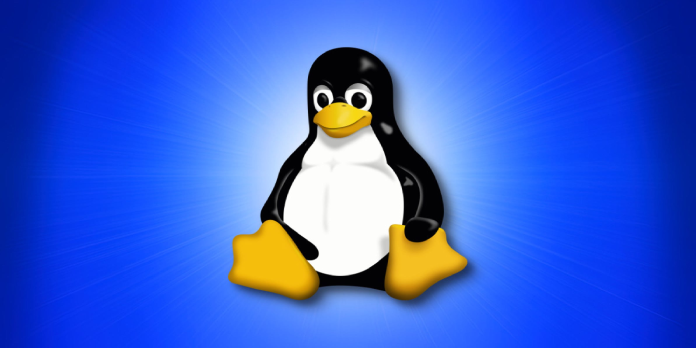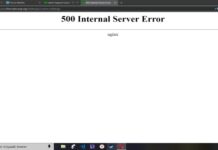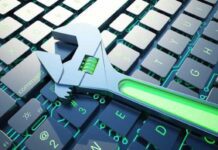Here we can see, “Linux”
Starting with version 1.5, EasyBCD provides full-fledged support for Linux, BSD, Solaris, and other operating systems, putting it miles ahead of the competition. Most significantly, EasyBCD provides multiple options for getting these operating systems to operate with Vista, just in case one or more of them fails to perform as expected.
Adding Linux to the Vista Bootloader
Chainloading is a dual-boot word that refers to one bootloader passing the boot process to another. In this scenario, we tell the Vista bootloader to ask Grub or Lilo (the two most popular Linux bootloaders) to finish the boot process for us, reducing configuration and assuring maximum compatibility.
Vista came first, followed by Linux
Installing Linux after Windows Vista is up and running is a breeze with EasyBCD. These instructions presume you already have Windows Vista installed and booting and want to install Linux on a separate hard drive or partition. These methods also assume you’re using Windows Vista with the default bootloader and haven’t changed the active partition manually. Scroll down to the following step if you had Linux installed before installing Windows Vista.
- Place the Linux CD in the drive and proceed with the installation as usual.
- When prompted to set up the bootloader, make sure you install LILO, GRUB, or whichever bootloader you want to the bootsector of the Linux partition, not the MBR of your hard drive.
- Finish the Linux installation, remove the CD from the drive, and restart the computer.
You’ll be taken back to Windows Vista at this point. Don’t worry, and everything will be OK — you’ll be on Linux in no time!
- Turn on EasyBCD, then select Linux from the tabs at the top of the “Add/Remove Entries” screen.
- From the drop-down option, select the proper bootloader (either GRUB or LILO),
- Give the entry a nice name (we won’t say nay if you want to keep “NST Linux Loader” as the text!)
- The most difficult component of this mind-numbingly tough exercise (/sarcasm) is determining which hard drive and partition numbers match the disk on which Linux (and, most importantly, the bootloader) was installed.
- Drive numbers begin at 0 in EasyBCD (and Windows in general), and partition numbers begin at 1. As a result, the first drive’s second partition would be 0, 2.
- Reboot after pressing “Add Entry.”
Select Linux when the Vista bootloader asks what OS you want to boot into to begin the first-run configuration for your brand-new Linux installation.
That’s all there is to it!
Before Vista, there was Linux
These instructions presume you already had a fully functional Linux installation before installing Windows Vista. It also implies that you’ve already booted Linux with either GRUB or LILO. Please visit the proper documentation on their individual website if you used another bootloader (s).
You have two choices at this time. The first approach is more compatible and stable, but it can be a pain depending on your level of Linux familiarity. The second method employs the brand-new NeoGrub bootloader in conjunction with the Vista BCD to boot Linux — but it only works on a small number of systems. For more information, visit the NeoGrub section.
The bootloader should be reinstalled
At this point, we must install GRUB into our system’s bootsector. You have two options for getting started: use a Live CD or a recovery disk to boot into Linux. The second (and easier) way is to restore GRUB using Super Grub Disk.
Booting into Linux
Running the GRUB program from within Linux is required to reinstall GRUB correctly. You may now boot into your Linux installation or a functional Live CD if you have one. Open a console window once the desktop has loaded (like dos prompt in Windows).
Run the following command once the console is open:
su -
bash
grubYou should now be in a GRUB shell, which is essentially an operating system within an operating system. Use this instead if you’re running Ubuntu or another distribution that works similarly:
sudo bash
grubContinue to “Installing GRUB” after skipping the next part.
Super Grub Disk is being booted
Don’t worry if you don’t have a Live CD or aren’t familiar with Linux.
“Super Grub Disk” is a useful tool for recovering the GRUB bootloader from a bootable floppy CD, DVD, or even a USB stick. NeoSmart Technologies has created a mirror of Super Grub Disk for your convenience — it’s only 400kb. Extract the archive to your desktop, then use your preferred tool to burn the ISO on a blank CD. You can install it to a floppy or USB stick instead, if you like, by following these steps.
Reboot your PC and boot from the CD after you’ve installed SGD to a CD. Select “English” from the Language selection box, then press a key to proceed once SGD has loaded. Press the letter ‘c’ on the SGD menu to enter a GRUB prompt.
A GRUB shell will open at this point, and you can move on to the next stage.
GRUB Installation
Continue with the steps below once you’ve entered the GRUB program (through a Live CD or SGD):
find /boot/grub/stage1
It’ll give you an (hdx,y) value that you can use to configure GRUB. (If it doesn’t, you’ll have to fiddle with the path to stage1, which varies per distro, but this is most likely what you’re looking for.)
Both the drive and partition numbers in Linux start at zero. For example, if Windows was installed on the first partition of the first disk and Linux was installed on the second partition of the same drive, you would refer to the second partition as hd(0,1). For additional information and colourful history of this topic, read Drive Letters and Numbers.
(hd0,0) first primary partition on first hard disk (hd0,1) second primary partition (hd0,2) third primary partition (hd0,3) fourth primary partition (usually an extended partition) (hd0,4) first logical partition (hd0,5) second logical partition ...
Once you have that value, type this, substituting (hdx,y) for the preceding command’s output.
root (hdx,y) setup (hdx,y) setup (hdx,y) quit
Because the first GRUB setup command frequently fails and the second succeeds due to changes made by the first, the setup line is repeated twice. There’s no danger in doing it twice. We’ve just installed GRUB to the partition’s bootsector. (We could have written hdx just if we wanted to install it to the MBR, but we don’t want to!)
Restart your computer if you’re using a Live CD. Your computer will reboot if you use the shutdown -r 0 command. To go back into Windows Vista, make sure you’ve removed the CD from the drive.
Back in the days of Windows Vista
It would help if you now were on Windows Vista, with GRUB or LILO stashed away in a hidden sector someplace on your hard drive. Launch everyone’s favourite bootloader manager (of course, EasyBCD!), then select “Add/Remove Entries” from the drop-down menu.
- Choose “LinuxBSD” from the top-level tabs.
- Choose GRUB or LILO from the drop-down selection depending on what you specified earlier.
- For your Linux partition, select the appropriate drive and partition number. This partition should be the same as the one we just finished configuring. The portion in question may look something like this, depending on the version of EasyBCD you’re using:
- Type the name you want to give the Linux entry in the bootloader.
- To test, press “Add Entry” and reboot.
These steps are a little hard, and making a mistake could result in some unwelcome trouble (don’t worry, anything that can’t be remedied without losing data). If you’re unsure about something, don’t take a chance; instead, seek assistance.
Conclusion
I hope you found this information helpful. Please fill out the form below if you have any questions or comments.
User Questions
1. What exactly is Linux, and why is it so popular?
Linux is a Unix-like operating system (OS) for PCs, servers, mainframes, mobile devices, and embedded devices that is open source and community-developed. It is one of the most widely supported operating systems, supporting almost every major computer platform, including x86, ARM, and SPARC.
2. Is it unlawful to use Linux?
Linux distributions are legal in general, and downloading them is also legal. Many people believe Linux is unlawful since most people prefer to get it via torrent, which they naturally equate with illicit activities.
3. Who truly uses Linux these days?
Linux is used on about 2% of desktop PCs and laptops, with over 2 billion installed in 2015. That’s around 4 million Linux-based computers. Of course, the number would be larger now—possibly about 4.5 million, which roughly corresponds to Kuwait’s population.
4. What is Linux and why should I consider using it? : r/technology
What is Linux and why should I consider using it? from technology
5. ELI5: What is Linux? : r/explainlikeimfive – Reddit



